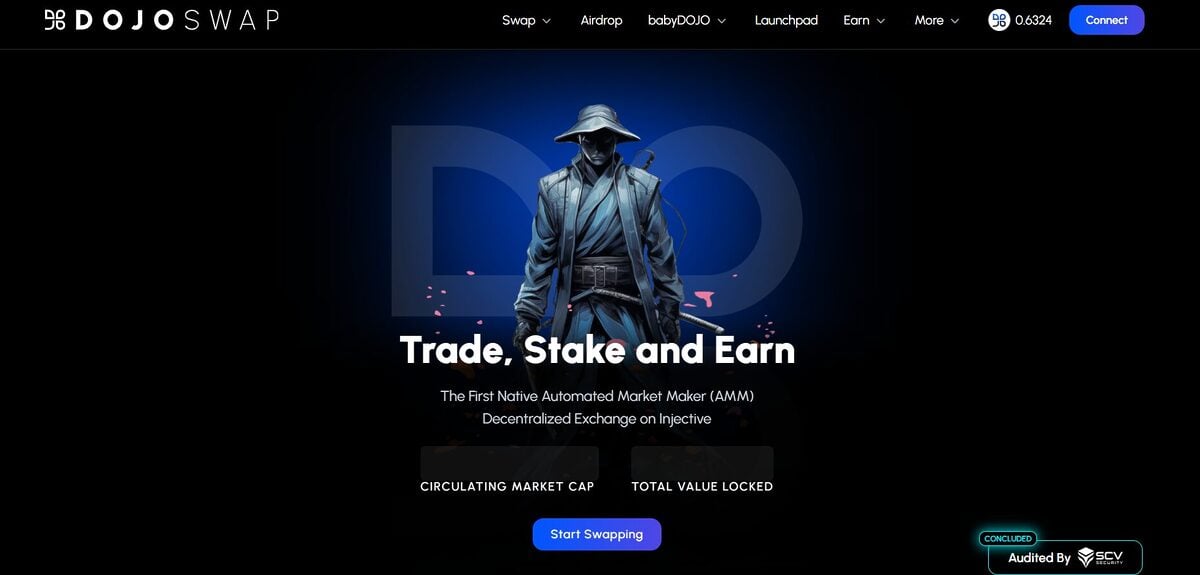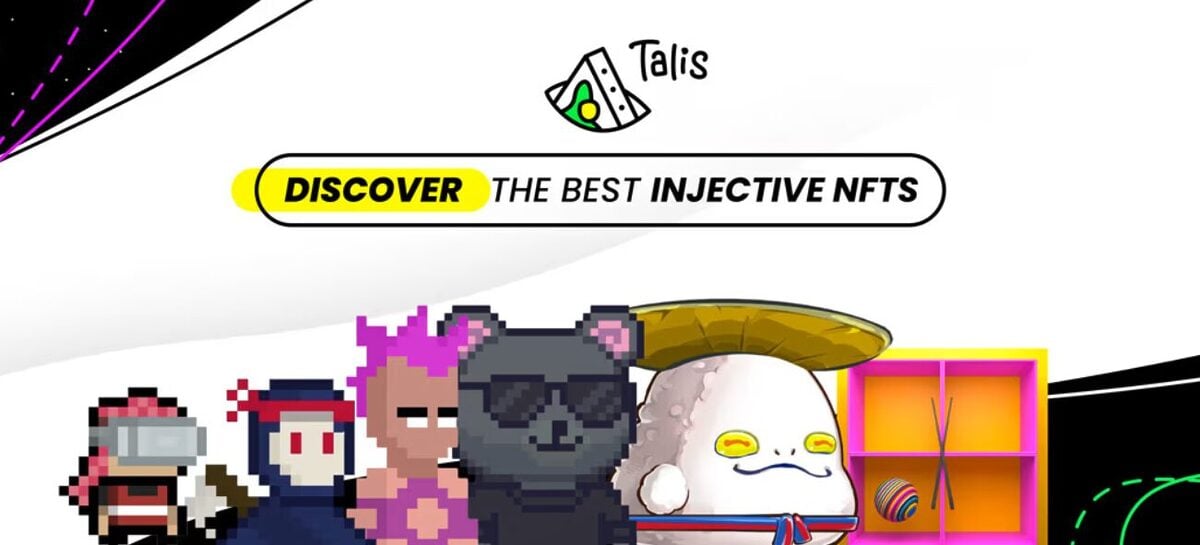
Injective (INJ) is an exciting network with an ambitious vision. Like its rivals, Injective Protocol claims to be the fastest Layer 1 blockchain in the industry, offering unprecedented speeds and a secure, user-friendly blockchain experience.
No longer content with simply being an Ethereum-Killer, the Injective crypto faithful have labeled the Cosmos-based a Solana-Killer, targeting the crypto market’s leading alternative smart contract platform.
What is Injective Protocol, and why has this cryptocurrency attracted sizable backing from the likes of Binance, Pantera Capital, and legendary investor Mark Cuban?
Table of Contents
What Is Injective (INJ)?
Injective Protocol is an emerging blockchain network that includes everything we would expect from a top-tier smart contract platform.
Sponsored
Built using the popular Cosmos SDK and Tendermint Proof-of-Stake consensus mechanism, the Injective blockchain enjoys high network speeds and low gas fees.

As a part of the wider Cosmos ecosystem, Injective is also highly interoperable with other CosmWasm blockchains like Cosmos, Celestia, and SEI. As a bonus, Injective Protocol is remarkably energy-efficient with each transaction using over 10,000x less energy than Proof-of-Work chains like Bitcoin (BTC).
How Does Injective Protocol Work?
Like many of its competitors, Injective is a Proof-of-Stake blockchain. In a PoS consensus mechanism, network validators are randomly selected to verify on-chain transactions, secure the blockchain, and create new blocks.
Sponsored
In exchange for this service, validator nodes earn emissions of INJ tokens. This popular digital currency is the lifeblood of the network and can be used in dozens of apps and platforms in the Injective ecosystem.
INJ coin is also used as the governance token of the Injective blockchain. This gives INJ token holders the power to vote on proposals that guide the future and direction of the protocol and helps to decentralize the network.
INJ Token Burns
Joining the trend, the Injective blockchain has introduced certain methods that help curb token inflation. This helps to boost token scarcity and is believed to support asset value.
As a hard-coded feature of the Injective network, 60% of trading fees are collected and stored in a basket. Every week, Injective community members can bid INJ tokens on this basket through an on-chain auction to collect the fees accrued by the chain. After the auction is closed, the winning bid is burned and removed from the circulating supply forever.
The Injective Ecosystem
Despite the Injective blockchain’s infancy, the network has seen a flurry of activity driven by passionate community members. Injective hosts all the classic crypto dApps we would expect to find, benefiting from Injective’s high transaction throughput and low fees.
Defi on Injective
Since its inception, Injective Protocol has largely been developed to house financial systems and applications at a massive scale. As you would expect, this has resulted in a thriving on-chain Defi ecosystem.

Currently, DojoSwap is the largest decentralized exchange on the network. The platform allows traders to instantly swap Injective-based tokens through trustless liquidity pools or stake and farm native assets to earn trading fees accrued by the protocol.
Other Defi applications on Injective include Helix, an on-chain perpetual trading platform that uses an order book interface like your favorite centralized crypto exchanges, and Hydro Protocol, a liquid staking platform that allows users to earn rewards on staked INJ tokens without needing to lock up their assets.
Injective NFTs
Given that Injective’s vision has been primarily focused on developing financial applications and infrastructure, it’s unsurprising that the network hasn’t cultivated a thriving NFT ecosystem. The action is centered around Talis Protocol, which has established itself as the chain’s leading NFT marketplace.

Several projects have begun their quest to become the network’s blue-chip collections, but NFT trading volumes remain low.
Injective Protocol History
Injective Labs, the company behind the Injective crypto, was founded in 2018 by Eric Chen and Albert Chon. The protocol was originally planned for a Cosmos IBC-based derivatives exchange for Ethereum tokens.
The blockchain network officially went live on November 8, 2021. However, Injective couldn’t support smart contract development at the time, so there was very little on-chain activity.
Things started to change on Injective on January 28, 2022, when the Injective v2 bridge upgrade went live. This enabled cross-chain functionality on the network, allowing IBC-based assets like Cosmos to be transferred to and from the Injective blockchain.
The day everything changed was July 5, 2022. Cosmwasm smart contracts were finally enabled on the network, and developers could finally build and develop the applications and modules for which the blockchain had been so meticulously designed.
INJ Coin Investors: Who’s Backing Injective Protocol?
In their mission to develop a blockchain ideally suited for financial technologies and applications, Injective attracted the eyes of some of the crypto sphere’s deepest pockets.
Through early seed rounds and private sales, Injective Labs raised over $57M USD to support the development of Injective Protocol. These rounds were led by some of the biggest venture capital firms in crypto, including Binance Labs, Jump Crypto, Pantera Capital, and celebrated businessman Mark Cuban.
Since its initial rise, Injective Labs spread its wings even further. Following additional support from Kraken Ventures, Delphi Labs, and Kucoin Ventures have dedicated over $150M to the Injective Ecosystem Grant.
These incentives promise to support teams building Web3 applications within the Ecosystem and help Injective grow to become one of the leading Layer 1 blockchains in the industry.
Injective Crypto Pros and Cons
Injective Protocol certainly offers much, but is it worth the hype and excitement? Let’s review the perks and benefits of this emerging network.
Pros
- Fast, Efficient Network – Injective Labs claims that the Injective blockchain can handle up to 10,000 TPS (transactions per second), with gas fees that cost only a fraction of a cent.
- Huge Support and Resources – With backing from Binance Labs, Pantera Capital, and Mark Cuban, Injective has all the resources and connections it needs to go far in the industry.
- Interconnected Ecosystem – As a part of the Cosmos IBC, Injective is well-connected to dozens of other blockchains like Cosmos, Celestia, and Osmosis.
Cons
- Layer One Competition – The Layer One race is fiercely competitive. With so many other networks like Solana dominating the market, Injective might struggle to separate itself from its rivals.
- Low On-Chain Metrics – Despite its large funding and passionate community, on-chain stats show that Injective isn’t getting much use. TVL and on-chain volumes are lower than you might find on blockchains with a far lower market cap and less support, suggesting that Injective price could be overvalued.
On the Flipside
- Injective has lower on-chain TVL than many other Cosmos-based blockchains, including Kava, Cronos, and Osmosis. However, that may be because these other chains are older and have had more time to develop a native DeFi ecosystem.
Why This Matters
Injective Protocol has been touted as one of the potential big winners of the next crypto bull run. Learning about the Injective blockchain and its unique offerings will help you make more educated decisions in the crypto market.
FAQs
You can buy INJ, the native cryptocurrency of the Injective Protocol, on popular crypto exchanges like Binance and Kraken.
Injective’s all-time high was recorded on March 14, 2024, when INJ’s price was registered at $52.75.
Injective Protocol has a total supply of 100M tokens.
